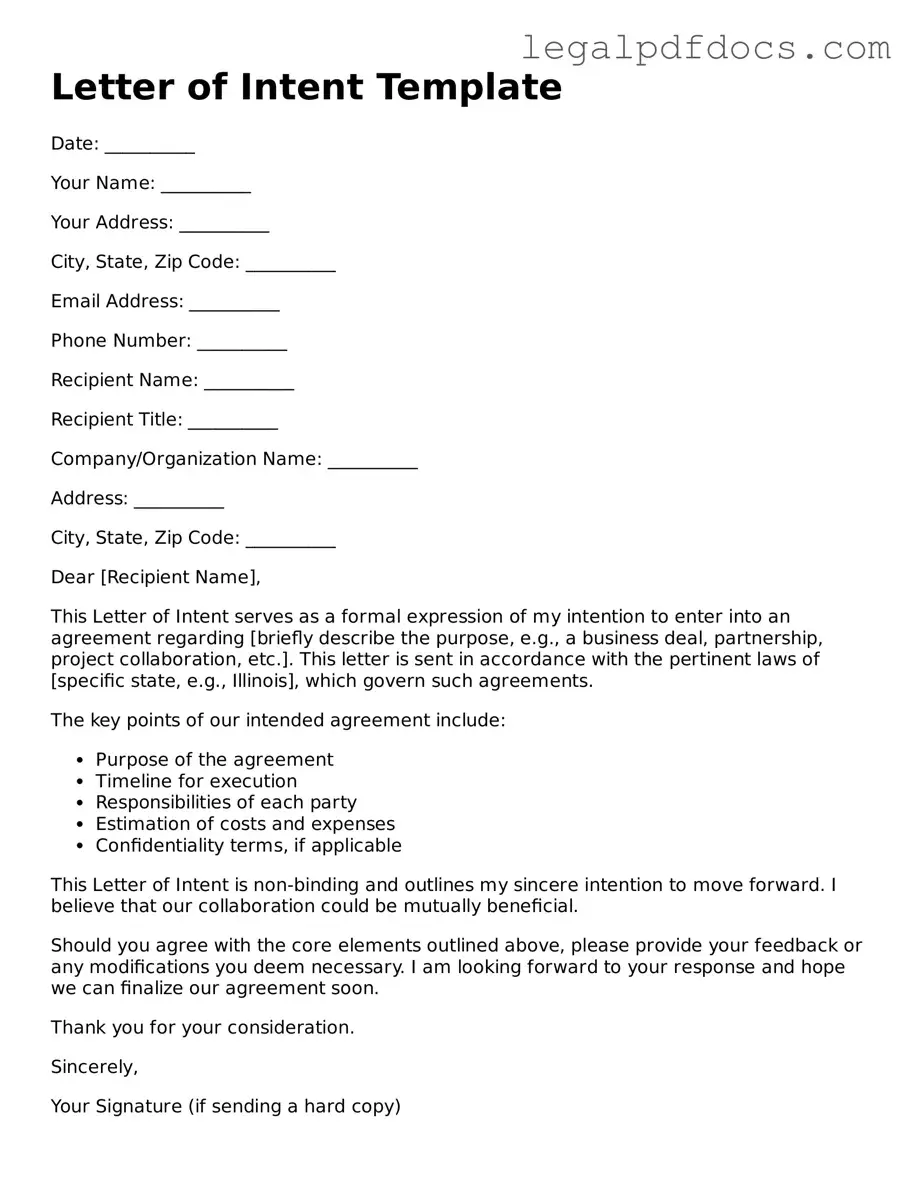A Letter of Intent (LOI) serves as a crucial document in various business and legal transactions, signaling the intent of parties to engage in a future agreement. This form typically outlines the key terms and conditions that will guide the negotiations, providing a framework for the discussions ahead. It often includes important elements such as the scope of the proposed agreement, timelines for completion, and any contingencies that must be met. By clearly stating the intentions of each party, the LOI helps to minimize misunderstandings and sets the stage for a more formal contract. Additionally, it may address confidentiality and exclusivity, ensuring that sensitive information remains protected during the negotiation process. Understanding the components of an LOI is essential for anyone involved in business dealings, as it can significantly impact the outcome of future agreements.
